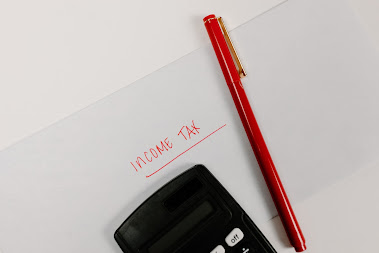Female Urinary Incontinence: Medical Condition Affecting Elderly Women-Causes & Treatment- Contributed By Dr. Anuradha Manoharan MBBS, MD (Obs and Gyn) FRCOG
Photo by Teona Swift from Pexels
What is Urinary Incontinence?
It is a loss of bladder control resulting in leakage of urine.
It usually occurs in the elderly and can range from a few drops to moderate amounts.
One should consult a doctor if the symptoms limit daily activities and social interactions.
It can be temporary due to an underlying medical condition or more chronic
What causes Urinary Incontinence?
Though it is not an inevitable result of aging, UI is more common after the age of 50.
It occurs due to specific changes in body function as a result of disease or an effect of medication.
For example, urinary incontinence may be the only symptom of a urinary tract infection. So when the infection is treated the incontinence resolves.
Women are most likely to develop UI during pregnancy and childbirth or at menopause due to hormonal changes.
Types of Urinary Incontinence?
There are 4 main types
A. Stress incontinence when there is a leak on increasing abdominal pressure like coughing or laughing.
B Urge incontinence
This is the inability to hold urine till you reach the restroom.
Common precipitants include:
·
Sound of
running water,
·
Pulling
down clothes to void,
·
Seeing a
bathroom sign,
·
Exposure to
cold,
·
Drinking
large amounts of fluid and
·
Use of
certain medications like diuretics and cholinesterase inhibitors.
This can coexist with a condition called detrusor hyperactivity with impaired contráctility in which contractions don’t fully empty the bladder leaving a large post-void residual amount of urine.
C. Overflow incontinence when the quantity of urine produced exceeds bladder capacity and there is leakage.
D. Functional UI is a result of cognitive, physical ,or environmental factors that prevent a person from voiding appropriately like arthritis, Parkinson’s ,etc.
How is UI diagnosed?
It is important to diagnose the type of incontinence to get the correct treatment.
Assessment entails a detailed history that includes the onset of symptoms and their severity, previous treatments and their outcomes, history of medications, and co-morbid conditions like diabetes, arthritis, etc.
Physical examination includes an assessment of cognition, mobility, toileting skills, neurological function, and an internal vaginal exam.
Urinalysis is done to check for urinary tract infection.
A bladder diary is useful to identify incontinence patterns and severity.
A post-void assessment is done by ultrasound.
Urodynamic studies may be recommended if more information is needed to come to a diagnosis.
Treatment for Urinary Incontinence
Specific treatment will depend on:
— Age, overall health, and medical history
—- Type of incontinence and extent of disease
—- Tolerance for specific procedures, medications or therapies
—-Your expectations for the course of the disease
A combination of treatments may be required.
The cornerstone of management is to try less invasive treatments first and move on to other options if these do not give the desired outcome.
Treatment may include
1. Behavioral techniques
- Bladder training -This teaches you to resist the urge to void and gradually expand the intervals between voiding. Start by holding off for 10 minutes every time you feel an urge to urinate. The goal is to lengthen the intervals to void only once every 2.5 to 3.5 hours.
- Scheduled toilet trips to urinate every two to four hours rather than waiting for the urge to go.
- Double
voiding means urinating and then waiting for a few minutes and trying again.
This helps in emptying the bladder more completely to avoid overflow
incontinence
2. Diet Modification
Avoid bladder irritants like caffeine, alcohol, and citrus fruits, and reduce liquid consumption.
Increasing physical activity and losing weight can also help.
3. Pelvic Muscle Rehabilitation to improve pelvic muscle tone to prevent leakage. This includes:
Kegel exercises - Imagine that you are trying to stop the urine flow. Tighten the muscles you would use to stop urine flow and hold for 5 seconds and then relax for 5 seconds. Work for holding the contractions for 10 sec. Aim for at least 3 sets of 10 repetitions each day.
To help you identify and contract the right muscles a pelvic floor physical therapist or biofeedback techniques help.
Vaginal weight training -Small weights are held within the vagina by tightening the vaginal muscles
Pelvic floor electrical stimulation. Mild electric impulses stimulate muscle contractions. It may help both stress incontinence and urge incontinence; multiple treatments over several months may be required.
4 . Medication
Anticholinergics - These medications can calm an overactive bladder and are helpful in urge incontinence. Examples of drugs include oxybutynin, tolterodine, darifenacin, fesoterodine, solifenacin, and trospium chloride
Mirabegron used to treat urge incontinence relaxes the bladder muscle and increases the amount of urine your bladder can hold. It also increases the amount you urinate at one time helping to empty the bladder more completely
Vaginal Estrogen in the form of cream, ring, or patch helps tone and rejuvenate tissues in the urethral and vaginal areas
5. Medical devices include
Pessary - It is a flexible silicon ring that is worn inside the vagina all day to prevent leakage. It is used in women with vaginal prolapse a condition frequently accompanied by stress incontinence. The pessary supports the urethra to prevent urine leakage.
Urethral insert -It is a small tampon-like disposable device inserted into the urethra before a specific activity that can trigger incontinence like playing tennis. The insert acts like a plug to prevent leakage and is removed before urination.
6. Office procedures
Botox injections into bladder muscle -It helps in overactive bladder and urge incontinence. It is generally prescribed when other treatments have not been successful.
Urethral bulking agents - A synthetic material is injected into tissue surrounding the urethra. The bulking material keeps the urethra closed and prevents urine leakage. This is done for stress incontinence and is generally less effective than surgery. It may have to be repeated more than once.
Nerve stimulation -Two types of devices use painless electrical pulses to stimulate the nerves involved in bladder control (sacral nerves). One type is implanted under the skin in the buttock and connected to wires in the lower back. The other type is a removable plug that is inserted into the vagina. Stimulating the sacral nerves can control overactive bladder and urge incontinence when other therapies have not worked.
7. Surgery
Slings -Synthetic material (mesh) or strips of your own tissue are used to create a pelvic sling underneath the urethra and bladder neck which is the junction between the bladder and urethra. The sling keeps the urethra closed when you laugh or cough. This procedure is used to treat stress incontinence
Bladder neck suspension -This procedure provides support to the bladder neck. It involves an abdominal incision; so it is done under spinal or general anesthesia.
Prolapse surgery - In women who have pelvic organ prolapse and mixed incontinence, surgery may include a combination of sling procedure with prolapse surgery. Repair of only the prolapse does not routinely improve the incontinence.
Artificial urinary sphincter - A small fluid-filled ring is implanted around the bladder neck to keep the urinary sphincter shut until there is a need to urinate. To urinate you press a valve implanted under your skin that causes the ring to deflate and allows urine to flow from the bladder.
Products to ease the discomfort of incontinence?
They include:
--Pads and protective garments -They are no more bulky than normal underwear and can be worn under everyday clothing
—Catheter - If there is a problem of incomplete emptying the doctor may recommend a soft tube (catheter) to be inserted into the urethra several times a day to empty the bladder. Safe cleaning procedures to reuse the catheter have to be learned.
Lifestyle and home remedies
Extra care is required to take care of skin irritation due to urine leakage. Some remedies are
- use a washcloth to clean yourself
- allow your skin to air dry
- avoid frequent washing and douching because it hampers the natural bladder immunity to resist infections.
- Barrier creams like petroleum jelly or cocoa butter can be used to protect the skin.
If you have urge incontinence or nighttime incontinence make access to the toilet more convenient
-by moving rugs or furniture you might trip over or collide with on your way to the toilet
-by using a lighted pathway to the bathroom to prevent falls.
If you have functional incontinence you can:
-use a bedside commode
-use an elevated toilet seat
- widen an existing bathroom doorway.
In conclusion, effective treatments are available for urinary incontinence. It’s important to ask!!
Once that is done you will be on your way to regaining an active and confident life. You need not be doomed to a life of severe social restriction.


